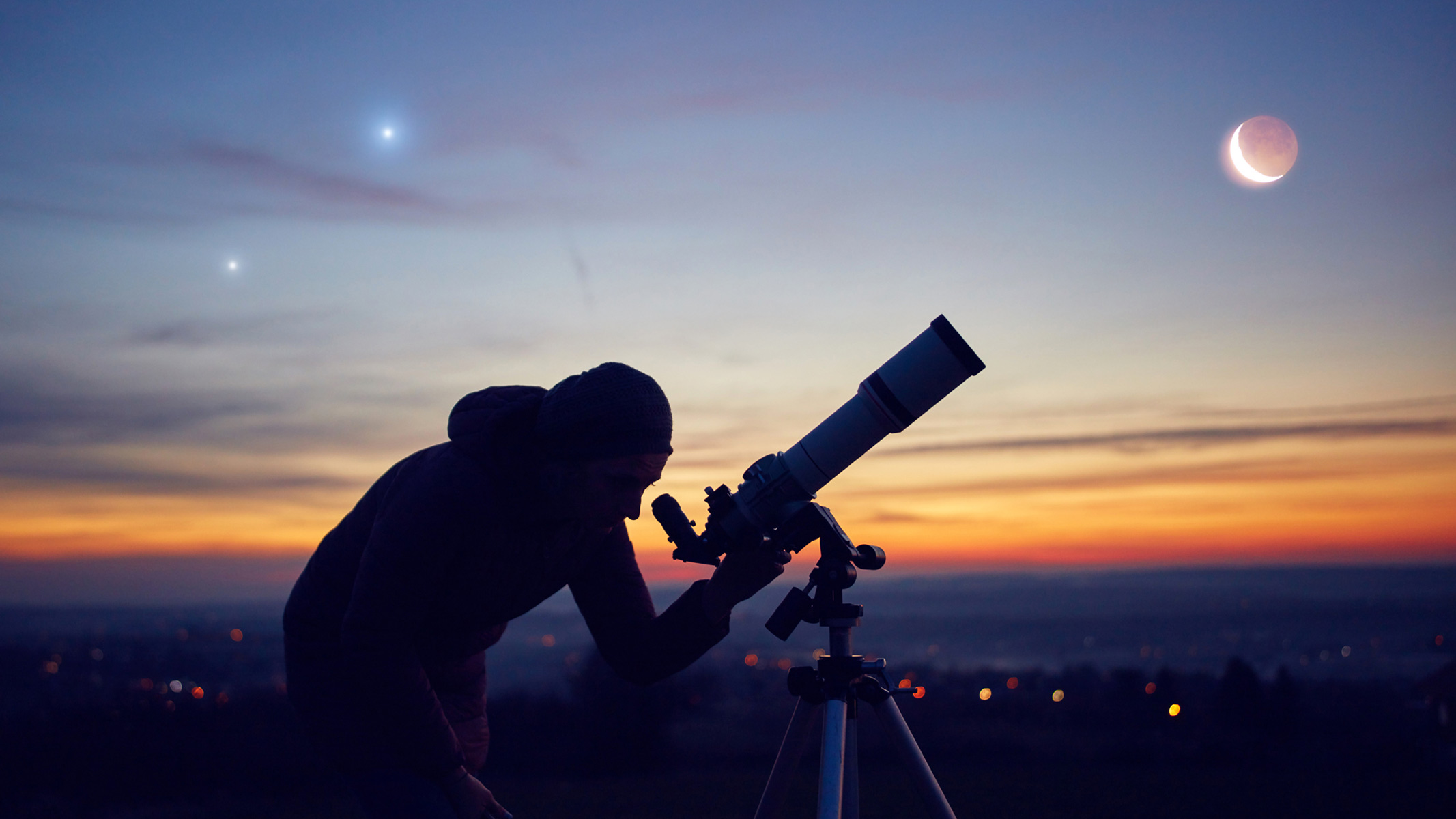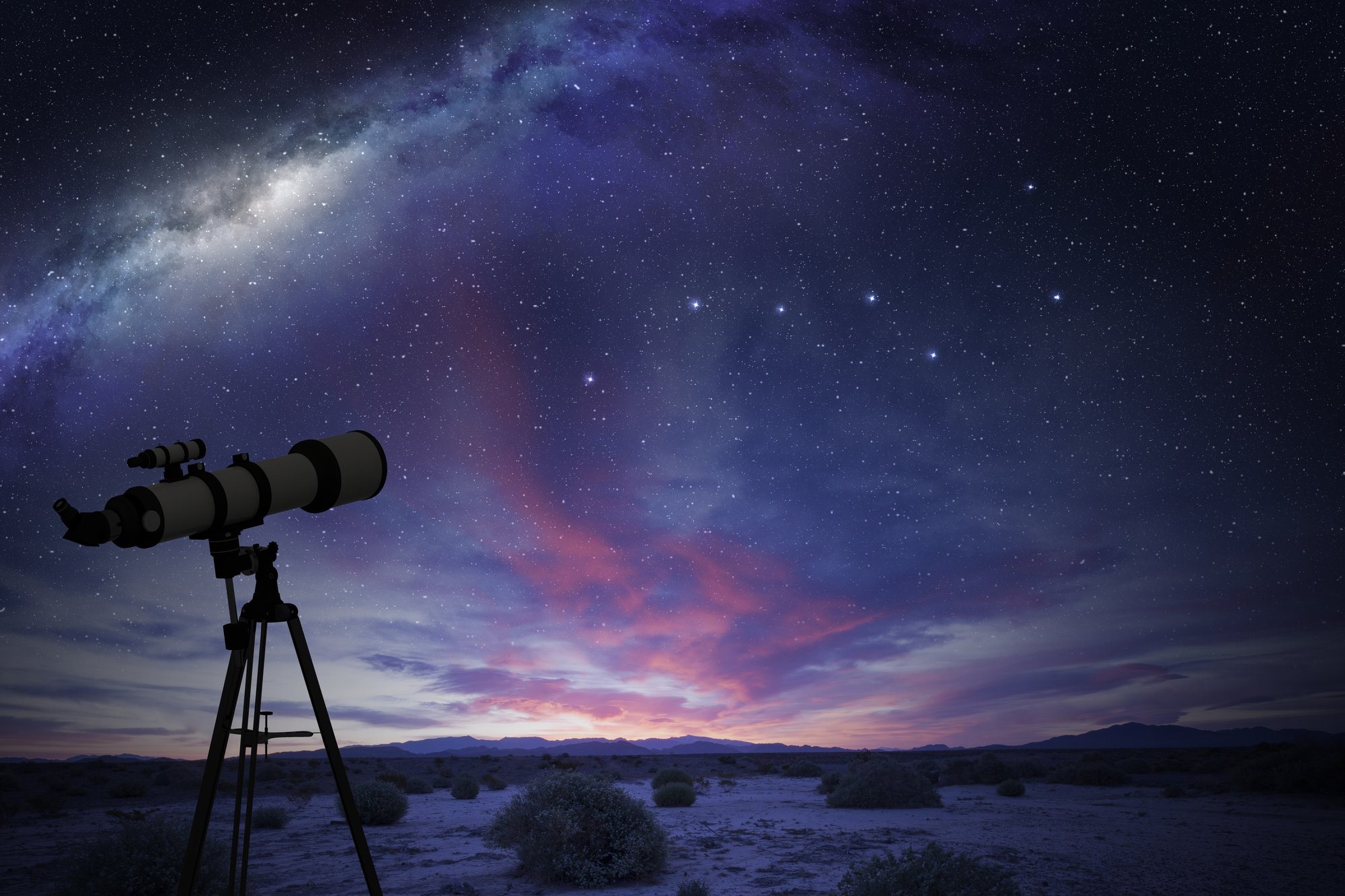Which telescope is best for seeing planets – Embark on a celestial journey as we delve into the realm of telescopes, seeking the optimal companion for your planetary observations. This comprehensive guide will illuminate the intricacies of telescope types, magnification, optical quality, and accessories, empowering you to make an informed decision that will elevate your stargazing experience to new heights.
Telescope Types for Planetary Observation

When selecting a telescope for planetary observation, understanding the different types available is crucial. Each type possesses unique characteristics that influence its suitability for viewing planets.
There are three primary telescope types: refractors, reflectors, and catadioptric telescopes.
Refractor Telescopes
Refractor telescopes utilize lenses to gather and focus light. They are known for their sharp images and high contrast, making them ideal for observing details on planets.
Advantages:
- Excellent image quality
- Easy to maintain and align
- Compact and portable
Disadvantages:
- Limited aperture size (typically below 10 inches)
- Can suffer from chromatic aberration (color fringing)
Examples:Celestron AstroMaster 70AZ, Meade Infinity 102AZ
Reflector Telescopes
Reflector telescopes use mirrors to gather and focus light. They offer larger apertures at a lower cost than refractors, making them suitable for observing faint objects like planets.
Advantages:
- Larger aperture sizes (up to several meters)
- Higher light-gathering capability
- Lower cost per inch of aperture
Disadvantages:
- More complex to maintain and align
- Bulkier and heavier than refractors
- Can suffer from diffraction spikes around bright objects
Examples:Orion StarBlast 6i, Meade Instruments LightBridge 130
Catadioptric Telescopes
Catadioptric telescopes combine elements of both refractors and reflectors. They use a combination of lenses and mirrors to achieve a compact design with a large aperture.
Advantages:
- Compact and portable
- Large aperture sizes (up to 12 inches)
- Good image quality with reduced chromatic aberration
Disadvantages:
- More expensive than refractors or reflectors
- Can be heavier than reflectors
Examples:Celestron NexStar 8SE, Meade Instruments LX90
Aperture and Magnification: Which Telescope Is Best For Seeing Planets
When choosing a telescope for planetary observation, aperture and magnification are two crucial factors to consider. Aperture, measured in millimeters or inches, refers to the diameter of the telescope’s primary lens or mirror. Magnification, on the other hand, determines how much closer an object appears through the telescope.
Aperture plays a significant role in gathering light. A larger aperture allows more light to enter the telescope, resulting in brighter images. This is particularly important for observing faint planets and their details. Moreover, a larger aperture also improves the telescope’s ability to resolve fine details, allowing you to discern subtle features on the planets.
Magnification is achieved by using eyepieces with different focal lengths. A shorter focal length eyepiece provides higher magnification, while a longer focal length eyepiece offers lower magnification. However, it’s important to note that magnification is not the only factor that affects image quality.
Too much magnification can result in a blurry image due to atmospheric turbulence or optical aberrations. It’s crucial to find the optimal magnification that balances detail visibility with image clarity.
If you’re looking for an immersive home theater experience, the LG OLED evo G3 55-inch 4K Smart TV is an excellent choice. Its stunning OLED display delivers deep blacks and vibrant colors, while its advanced sound system provides crystal-clear audio.
To enhance your sound system even further, consider pairing it with a best subwoofer for 2 channel stereo. A powerful subwoofer will add depth and richness to your music and movies, creating an immersive and unforgettable home theater experience.
To determine the optimal magnification for planetary observation, consider the following formula:
Optimal Magnification = (50 x Aperture in inches) + 2
For example, if your telescope has an aperture of 6 inches, the optimal magnification for planetary observation would be (50 x 6) + 2 = 302x.
Telescope Models Comparison
The following table compares the aperture and magnification of different telescope models to help you make an informed decision:
| Model | Aperture | Optimal Magnification |
|---|---|---|
| Celestron AstroMaster 70AZ | 70mm (2.8 inches) | 152x |
| Meade Instruments Infinity 50 | 50mm (1.97 inches) | 126x |
| Orion StarBlast 6i | 150mm (5.9 inches) | 302x |
| Sky-Watcher Heritage 130P | 130mm (5.1 inches) | 261x |
| Celestron NexStar 8SE | 203mm (8 inches) | 412x |
Optical Quality and Contrast

Optical quality is crucial for planetary observation as it directly influences the sharpness, contrast, and overall viewing experience. Factors such as lens or mirror coatings and surface accuracy play a significant role in determining the optical quality of a telescope.
High-quality optical components minimize aberrations, which are distortions that can degrade image quality. Lens or mirror coatings, such as anti-reflection coatings, reduce light loss and improve contrast by suppressing unwanted reflections. Surface accuracy ensures that the optical surfaces are precisely shaped and polished, resulting in a well-corrected image.
Examples of Telescopes with Excellent Optical Quality, Which telescope is best for seeing planets
Telescopes with excellent optical quality produce sharp, high-contrast images, allowing for detailed observations of planetary features. Some examples include:
- Celestron EdgeHD Series:Known for its high-quality optics, with advanced coatings and precise manufacturing, resulting in excellent image clarity and contrast.
- Meade LX90 Series:Features advanced Schmidt-Cassegrain optics with high-quality coatings and precise alignment, delivering sharp and detailed images.
- Takahashi FSQ-106ED:A premium apochromatic refractor telescope with exceptional optical quality, providing outstanding color correction and high contrast.
Mount Stability and Tracking
A stable and accurate mount is essential for successful planetary observation. A mount provides a stable platform for the telescope, minimizing vibrations and ensuring accurate tracking of planets as they move across the sky.
Mount Types
There are two main types of telescope mounts: alt-azimuth and equatorial.
If you’re seeking an immersive home entertainment experience, consider the LG OLED evo G3 55-inch 4K Smart TV. Its cutting-edge OLED technology delivers unparalleled picture quality with deep blacks and vibrant colors. For an enhanced audio experience, pair it with a best subwoofer for 2 channel stereo to enjoy deep and resonant bass that complements the exceptional visuals.
- Alt-azimuth mountsare simple and easy to use. They allow the telescope to be moved up and down (altitude) and left and right (azimuth).
- Equatorial mountsare more complex but provide better tracking accuracy. They align the telescope’s polar axis with the Earth’s polar axis, allowing the telescope to track planets as they move along the celestial equator.
Selecting a Mount
When selecting a mount, consider the following factors:
- Stability:The mount should be sturdy and heavy enough to support the telescope without vibrations.
- Tracking accuracy:The mount should be able to track planets accurately over long periods of time.
- Ease of use:The mount should be easy to set up and use.
Accessories for Enhanced Viewing
The enjoyment of planetary observation can be greatly enhanced by utilizing various accessories. These accessories can improve the contrast and reduce light pollution, ultimately providing a more enjoyable and detailed viewing experience.
One of the most important accessories for planetary observation is a filter. Filters can be used to improve the contrast between the planet and its background, making it easier to see details on the planet’s surface. There are a variety of different filters available, each with its own specific benefits.
For example, a red filter can be used to enhance the visibility of details on Mars, while a blue filter can be used to improve the contrast of Jupiter’s clouds.
Another important accessory for planetary observation is an eyepiece. Eyepieces come in a variety of different focal lengths, which can be used to magnify the image of the planet. A shorter focal length eyepiece will provide a wider field of view, while a longer focal length eyepiece will provide a more magnified view.
It is important to choose an eyepiece that provides the right magnification for the telescope being used.
Finally, a Barlow lens can be used to increase the magnification of an eyepiece. Barlow lenses are available in a variety of different magnifications, so it is important to choose one that provides the right magnification for the telescope and eyepiece being used.
Recommended Accessories
- Filters:Red, blue, and green filters are all useful for enhancing the contrast of different planets.
- Eyepieces:A variety of eyepieces with different focal lengths are useful for achieving different magnifications.
- Barlow lenses:Barlow lenses can be used to increase the magnification of an eyepiece.
Summary

As you embark on your celestial explorations, remember that the journey itself is as captivating as the destinations you seek. May your telescope become a trusted guide, unlocking the secrets of the cosmos and igniting a lifelong passion for the wonders of the night sky.
Answers to Common Questions
What factors should I consider when choosing a telescope for planetary observation?
Aperture size, optical quality, magnification, mount stability, and accessories all play crucial roles in determining the effectiveness of a telescope for planetary viewing.
Which telescope type is best for seeing planets?
Reflectors and catadioptric telescopes generally offer larger apertures and better optical quality, making them ideal for planetary observation.
How do I determine the optimal magnification for planetary viewing?
The optimal magnification depends on the aperture of your telescope and the seeing conditions. A good rule of thumb is to use a magnification of 50x per inch of aperture.
What accessories can enhance my planetary observation experience?
Filters, eyepieces, and Barlow lenses can improve contrast, reduce light pollution, and provide variable magnifications, further enhancing your planetary viewing capabilities.
